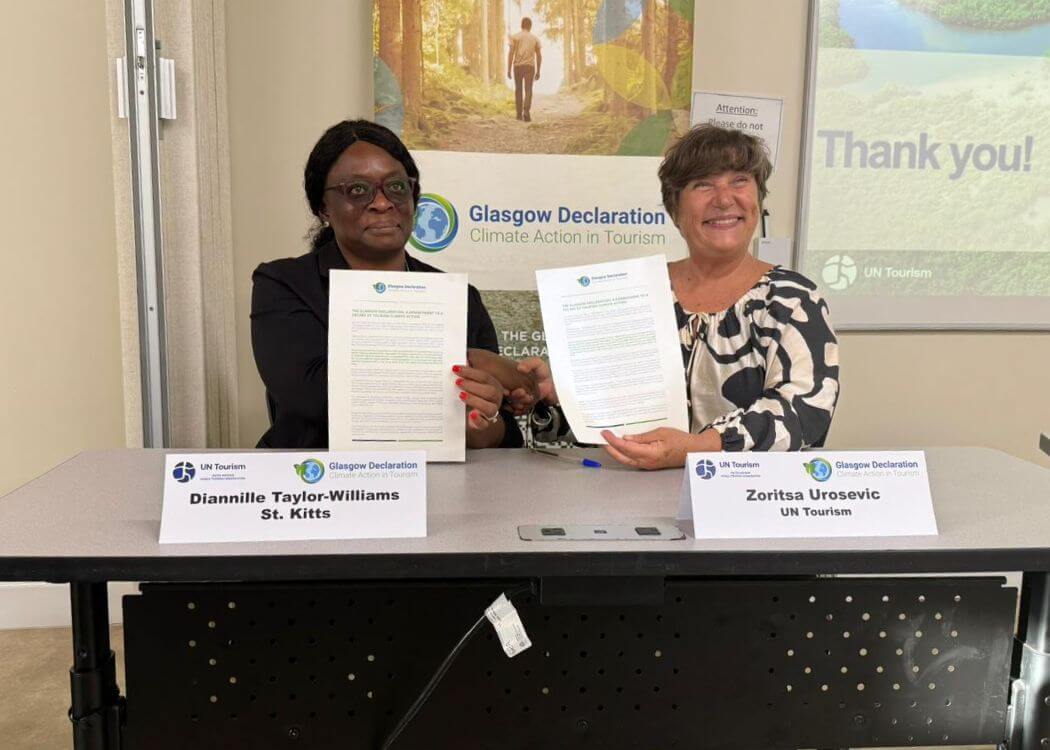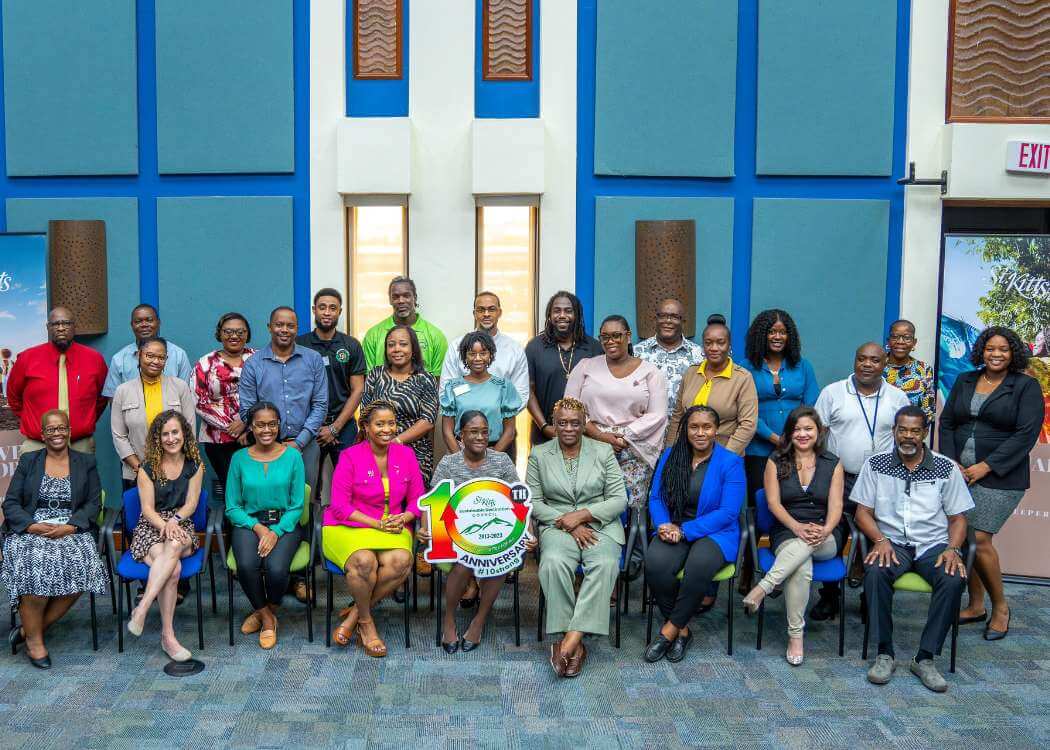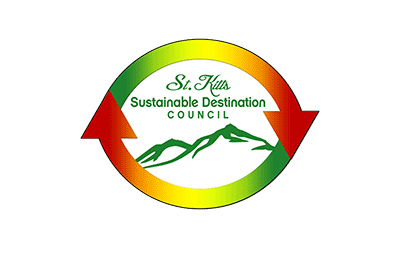Like many small island nations, St. Kitts and Nevis is on the front lines of a climate crisis that threatens its existence. Despite contributing only a small fraction of global emissions compared to larger nations, islands disproportionately bear the brunt of the consequences. In response, St. Kitts is taking ambitious steps to lead by example, partnering with Sustainable Travel International to develop a Tourism Climate Action Plan that outlines a collaborative path to decarbonize its tourism sector, enhance climate resilience, and foster sustainable practices to ensure long-term environmental and community benefits.
Climate Vulnerability in Tourism-Dependent Island Destinations
Islands like St. Kitts and Nevis face unique challenges, stemming from their geographic isolation, vulnerable coastlines, and limited resources. The Caribbean region faces growing threats from rising sea levels and more powerful hurricanes. With over 60% of St. Kitts and Nevis’s population residing in coastal areas, communities are particularly susceptible to the impacts of climate change.
The Caribbean is a top tourist destination and its economies depend heavily on the sector. However, these environmental challenges are already straining destinations’ ability to accommodate tourists and maintain their appeal. Since much of the region’s tourism infrastructure is just above sea level, even slight rises in water levels can cause significant damage to airports, resorts, and other tourism facilities. By 2050, damage from hurricanes, tourism losses, and rising sea levels is projected to cost the Caribbean $22 billion annually, or 10% of the region’s current GDP.
Coral reefs act as natural barriers that absorb up to 97% of wave energy and shield communities. But as the Caribbean’s reefs are increasingly affected by coral bleaching, they are vulnerable to disease and marine life decline, threatening local livelihoods and food security. Seafood is a primary source of protein in many coastal destinations, with the coral reefs in St. Kitts and Nevis supporting 48 tons of fish per square kilometer. These reefs provide habitats for species like queen conch and spiny lobster which are integral to local fisheries and supply fresh seafood to restaurants. The islands’ diverse underwater biodiversity also draws travelers, earning St. Kitts the title of the Caribbean’s leading dive destination.
Water scarcity further amplifies the climate challenges St. Kitts and Nevis faces. The island relies primarily on rainfall for drinking water, so any shifts in weather patterns can have severe consequences. Tourism demands like swimming pools and golf courses drive water usage, with tourists consuming up to eight times more than residents in developing countries. Regular water outages create competition for limited resources between tourism facilities and residents, particularly during the dry season, which coincides with peak tourist season.
Tourism’s Carbon Footprint and the Island’s Mitigation Challenges
Though St. Kitts and Nevis contributes only a small share of global emissions, tourism is a key contributor to the islands’ carbon footprint. For most visitors, reaching the Caribbean islands requires a long-haul flight or cruise, which generates a hefty carbon footprint. Compounding these challenges, 95% of St. Kitts and Nevis’s food is imported – a common issue for small islands due to limited local agricultural production, scarce arable land, and disruptions caused by natural disasters. The tourism industry’s demand for diverse food options further increases reliance on imports. Tourism also creates large amounts of waste, particularly from single-use products like plastic bottles and styrofoam containers. The island’s waste management systems are not equipped to handle this, so recyclables are exported for processing. This, combined with emissions from plastic production and transporting people and goods to the islands, contributes to tourism’s carbon footprint.
As tourism continues to grow and climate change poses increasing risks, the small island destination recognizes it cannot afford to wait for other countries to slash their emissions. St. Kitts has taken steps to mitigate environmental impacts and boost climate resilience including announcing a ban on single-use plastics and launching projects to rapidly decarbonize its energy sector and introduce seawater desalination.
A Track Record of Sustainable Tourism Leadership
Over the years, St. Kitts has partnered with Sustainable Travel International to implement its Pro People, Pro Planet tourism strategy, actively involving local stakeholders in tourism planning. Together, we have collaborated on several initiatives, including engaging tourism companies and residents in responsible practices, supporting the Sustainable Destination Council in promoting plastic reduction and cultural immersion, and gathering resident feedback on the future direction of tourism.
Our Role
Building on these successes, we are now supporting St. Kitts in developing a Tourism Climate Action Plan to ensure the tourism industry benefits both the environment and the community while addressing the challenges of climate change. This will provide a strategic framework for St. Kitts to reduce the carbon footprint of its tourism sector and strengthen its resilience to climate impacts.
In 2024, St. Kitts publicly affirmed its climate action commitment by signing the Glasgow Declaration on Climate Action in Tourism. This global initiative sets an ambitious goal for the tourism industry: halve emissions by 2030 and reach net zero by 2050. St. Kitts and Nevis Ministry of Tourism, Civil Aviation & International Transport is one of more than 850 organizations to endorse the declaration, underscoring the importance of collective action to tackle this pressing challenge.
The climate action planning process has been highly collaborative, bringing together businesses, government agencies, and local communities. Through workshops and discussions, stakeholders shared ideas that reflected their priorities and explored ways to coordinate efforts. This ensures that the actions included in the plan are practical and relevant to the specific climate challenges facing St. Kitts.
Carbon Footprint Analysis
To effectively mitigate the climate impact of its tourism sector, St. Kitts first needed to understand its starting point. This required measuring how much carbon was being emitted and the main sources contributing to it. We carried out a detailed carbon footprint analysis of St. Kitts’s tourism value chain, including flights, cruise travel, yachters, accommodation, taxi transfers, vehicle rentals, meals, and activities like catamaran trips and scenic train rides.
This analysis identified the main sources of emissions associated with the island’s tourism industry and the carbon footprint of the average tourist. These findings establish a clear baseline for reducing the island’s tourism-related emissions. We found that about 80% of emissions were from inbound transportation, such as flights and cruises, while on-island activities like accommodation and dining accounted for the remaining 20%. Seasonal variations also showed higher emissions during peak tourist months.
As an additional step, we evaluated the balance between the economic benefits of tourism and its environmental impact. By comparing the financial gains from tourism with the environmental costs of its carbon footprint, we discovered that regional travelers from the Caribbean contribute more economic value per unit of CO2 compared to long-haul tourists.
This data highlighted opportunities to reduce emissions and shift the balance towards maximizing economic benefits while minimizing carbon emissions, setting the foundation for the Tourism Climate Action Plan.
Empowerment Through Education and Participatory Action Planning
Education and inclusive tourism planning are cornerstones of our ongoing partnership with St. Kitts. Through this project, we continued building capacity and sustainability awareness among local tourism stakeholders, equipping them to implement and support the island’s climate action efforts. This included focus groups, one-on-one meetings, and workshops to gather input for the Climate Action Plan and ensure alignment with the tourism industry’s broader sustainability goals.
Tourism Enterprise Training
The first step was facilitating a hands-on training workshop for tourism businesses spanning the transportation, dining, and accommodation sectors. The workshop aimed to gather participant input for the Climate Action Plan, support the adoption of lower carbon practices, and collect data to measure the tourism industry’s carbon footprint.
Participants explored the impact of climate change on tourism and what climate action means for their businesses, discussing their roles in managing energy, water, waste, food, and the environment. During the workshop, attendees received practical resources to guide their efforts, including a climate-friendly travel tips handout to share with guests and a checklist of 10 actions they could implement to decarbonize their businesses.
Participants also envisioned changes they’d like to see in the destination and proposed actionable solutions, ranging from cost-free changes to larger investments. They also discussed opportunities to enhance existing efforts through better collaboration. This exercise emphasized the importance of cross-sector partnerships and encouraged businesses to learn from one another. Field trips to hotels offered real-world insights into climate solutions from high-tech approaches to behavioral changes like “no idling” policies.
Destination Leadership Workshop
We facilitated a second workshop to ensure the Climate Action Plan has unified support across government levels and aligns with national strategies. This workshop brought together destination leaders including senior representatives from various government departments, agencies like the United Nations, and environmental and cultural NGOs.
This session focused on identifying synergies and ongoing or proposed projects that could be integrated into the Climate Action Plan such as port decarbonization and mangrove restoration. It also addressed the practical aspects of implementation, such as mobilizing financing sources and overcoming potential obstacles to successful collaboration across government departments.
These workshops provided crucial insights that shaped the Climate Action Plan, emphasizing collaborative opportunities and addressing potential challenges. Designed to foster cooperation and identify partnership opportunities, these sessions engaged stakeholders to ensure the plan reflects the needs of St. Kitts, setting the stage for effective implementation and long-term impact.
Shaping The Tourism Climate Action Plan
Building on the carbon footprinting exercise and stakeholder input, we developed the Tourism Climate Action Plan. This comprehensive roadmap is designed to guide St. Kitts towards decarbonizing its tourism industry, adapting to climate impacts, and contributing to global efforts to mitigate climate change. The plan outlines specific actions and strategies across the five pathways of the Glasgow Declaration: Measure, Decarbonise, Regenerate, Collaborate, and Finance.
An important milestone was the Validation Workshop, where public and private sector stakeholders gathered to review the proposed actions in the plan. Participants ranked the strategies to prioritize those that deliver immediate results and long-term, transformational impact. Larger actions were refined into specific, measurable steps, ensuring successful implementation. The following five projects were identified as the top short-term actions:
- Deploy artificial reefs to strengthen climate resilience by reducing beach erosion, enhancing marine biodiversity, and supporting local fisheries.
- Safeguard the island’s cultural heritage sites by assessing climate risks and creating a plan to protect them.
- Educate visitors about climate-friendly practices and how to reduce their environmental impact.
- Host monthly island cleanups to drive immediate environmental improvements and raise awareness of the impacts of waste generation.
- Enhance coral reef protection and food security by marking protected area boundaries and working with fishers and dive operators to establish no-take zones for conch, lobster, and snapper.
The Climate Action Plan also includes longer-term actions that require more time, greater investment, and significant structural changes. Some of these actions include:
- Restore non-functional rainwater catchments to support local food production and increase the freshwater supply.
- Improve waste separation and recycling in tourism areas and launch a “trash-to-cash” initiative to support the development of circular businesses.
- Encourage tourism businesses to install rooftop solar panels through incentives and an awareness campaign.
- Install renewable energy and shore power in port facilities to reduce emissions from cruises, yachts, and ferries.
Building on the feedback from the workshops, the Tourism Climate Action Plan will be finalized and regularly updated. It will include a vulnerability assessment, which will guide the prioritization of climate actions and inform the development of a new, environmentally responsible tourism strategy for St. Kitts.
Through these actions, St. Kitts will ensure that their island is safeguarded and positioned for long-term climate resilience, creating an inclusive tourism industry that benefits both the local community and the environment.





"Sustainable Travel International's expertise and commitment have helped us shape impactful initiatives, from community-driven sustainability programs to the development of our Tourism Climate Action Plan – ensuring that our island leads by example in the global fight against climate change."
- Diannille Taylor-Williams, Director at St. Kitts Ministry of Tourism





